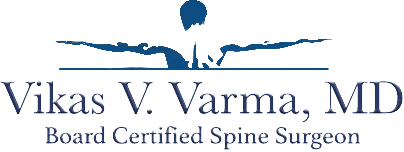What Should You Expect from ACDF Surgery?
Neck pain has slowly become one of the most common spinal ailments amongst both men and women, regardless of age. When patients feel neck pain, it can often be a result of two types of issues, either muscular problems or problems that stem from the vertebrae. According to Dr. Vikas Varma, the top spine surgeon Manhattan has to offer, muscular issues are often associated with poor posture, improper sleeping positions, and muscle strains. While muscle issues are definitely common, more often than not, when patients experience neck issues, they are a product of years of deterioration along the upper spinal vertebrae, or some type of trauma in the same region. The upper spine area is known as the cervical spine, and therefore damage to this area can affect either the cervical vertebrae (bones), or the spinal discs that are placed in between the vertebrae. These discs act as shock absorbers in a way, and prevent the vertebrae from touching one another. However, over time, these discs can also begin to deteriorate, and begin to dry out. When they dry out, according to the top spine surgeon Manhattan has in practice, Dr. Varma patients lose their much-needed shock absorbers and will feel the pain of bone on bone within the spine. When this type of damage or disc herniation occurs, it can lead to terrible pain for patients, and often, in order to combat such issues, patients will have to undergo surgical procedures such as the ACDF surgery, otherwise known as anterior cervical discectomy and fusion.
Anterior cervical discectomy and fusion (ACDF) is a surgical procedure designed to remove a herniated or degenerative disc in the neck. To begin, an incision is made in the throat area to reach and remove the disc. A graft is inserted to fuse together the bones above and below the disc. According to Dr. Varma, the top sine surgeon Manhattan has to offer, this (and any other) form of surgery is a last resort, as it is vital that patients try far less invasive methods of treatment before they are willing to jump right into surgery. ACDF surgery should only be performed if physical therapy or other anti-inflammatory medications fail to relieve your neck pain first. And while this is still surgery and saved for a last resort, the majority of modern spine surgeries have become far less invasive over the years and in most cases, patients typically go home the same day.
One important aspect of the ACDF surgery is the word discectomy, as it literally means to cut out the disc. According to the top spine surgeon NYC has to offer, Dr. Varma, a discectomy can be performed anywhere along the spine from the neck (cervical) to the low back (lumbar). The surgeon reaches the damaged disc from the front (anterior) of the spine through the throat area. By moving aside, the neck muscles, trachea, and esophagus, the disc and bony vertebrae are exposed. Surgery from the front of the neck is more accessible than from the back (posterior) because the disc can be reached without disturbing the spinal cord, spinal nerves, and the strong neck muscles. Depending on your particular issues and where the disc issues might be located, one disc (single-level) or more (multi-level) may be removed.
Once the disc material is removed, and the space between the upper and lower vertebrae is empty, we must add a spacer bone graft, to ensure they do not touch and cause even more pain and discomfort. According to Dr. Varma, the top spine surgeon NYC has in practice, the graft serves as a bridge between the two vertebrae to create a spinal fusion. The bone graft and vertebrae are fixed in place with metal plates and screws. Following surgery, the body begins its natural healing process and new bone cells grow around the graft. After 3 to 6 months, the bone graft should join the two vertebrae and form one solid piece of bone. The instrumentation and fusion work together, creating a solidly fused bone. The two most common issues that can be treated using the ACDF surgery include:
· Bulging or Herniated disc: The gel-like material within the disc can bulge or rupture through a weak area in the surrounding wall (annulus). Irritation and swelling occurs when this material squeezes out and painfully presses on a nerve.
· Degenerative Disc Disease: As discs naturally wear out, bone spurs form and the facet joints inflame. As mentioned by the top spine surgeon NYC has to offer, Dr. Varma, the discs dry out and shrink, losing their flexibility and cushioning properties. The disc spaces get smaller. These changes lead to canal stenosis or disc herniation – causing radiating pain from the neck to the arms, shoulders, and more.
For more information on this method of fusion surgery, and other intervertebral disc issues, be sure to contact Manhattan Orthopedic, Dr. Vikas Varma today.







